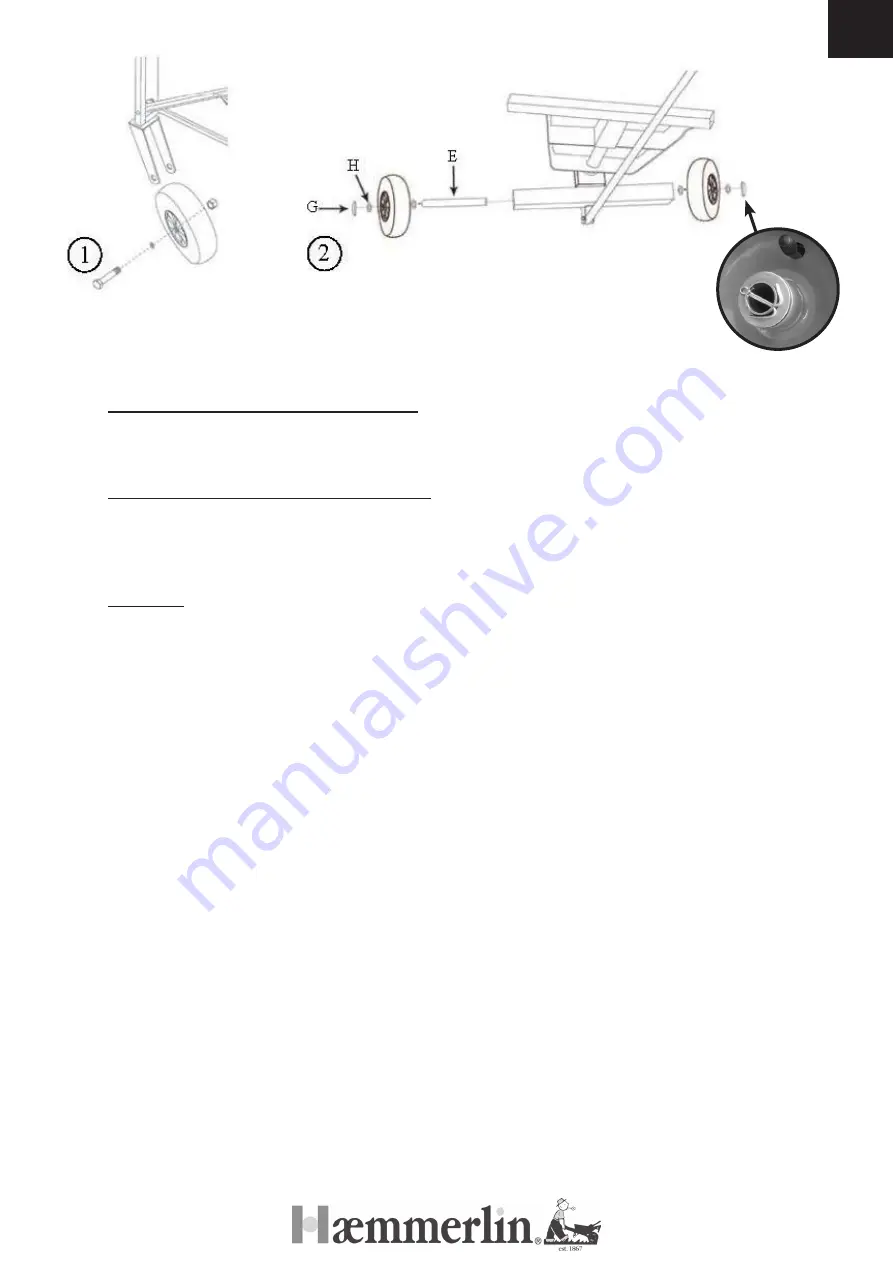
UK
Care and maintenance
Rust and corrosion are chemical reactions of oxygen and water on metal. All metals will with time
rust in one way or another. To reduce rust and corrosion, note the following:
• Avoid scratches and damages of all kinds. Any damage to the metal surface creates a place
where oxygen and/or water can contact the metal and lead to corrosion or rust.
• Clean the product every three to four weeks and before stowing away. You may clean the frame
with clean water and a mild detergent using a soft brush or cloth. Rinse the metal well and dry
fully. If needed, you may coat the metal with a car wax of your choice. This will protect the metal
from atmospheric oxygen and humidity for a while. The polyester cover cannot be washed. You
may wipe the cover with a moist cloth as needed.
• Do not use any etching or scouring cleaning agents.
•
Use a rust remover should you find rust on the metal. Remove any rust from metal in accordance
with the instructions for the product. Thereafter either wax again (as described above) or re-paint
the cleaned metal with the proper colour. Rust protection paint is recommended.
• Store the items in a dry room (after cleaning) should you not use them. Check the screws at
regular intervals and re-tighten as necessary.
4.
Assembly of the rear wheels (Figure 1): the screws, nuts and washers needed for assembly
are on the frame already. To assemble the wheels, take the wheels from the frame, place
them in their proper position as shown in Figure 1 and fasten.
Assembly of the front wheels (Figure 2): To assemble the front wheels, you will need one
cotter pin (G) and one washer (FI) per wheel. Now fasten the first wheel to the axle (E) as
shown in Figure 2. Then feed the axle through the steering shaft on the frame and fasten the
second wheel.
Warning : use a wrench to fold the cotter pin on itself, as show on the picture.
5.
Should the wheels not rotate easily, they may have been fastened too tightly. Release them
by loosening the screws slightly (1/2 turn).








